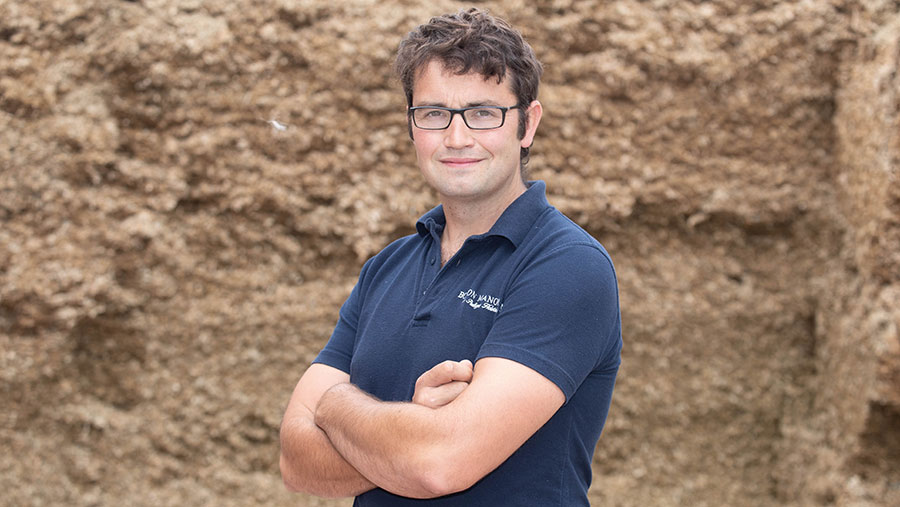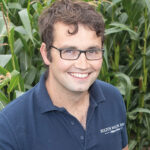Farmer Focus: Fresh silage lifts yields despite build work
 © Tim Scrivener
© Tim Scrivener The changeable weather seems to be providing a good year for producing forage. Drier summers suit us here in south Cumbria.
About 80ha (200 acres) of third cut was taken on 5 July, down slightly on area after giving 16ha (40 acres) of silage ground to the grazing cows.
Despite poor weather before and after cutting, we were amazed at how dry the grass we clamped was – a hangover from the dry, early summer weather.
See also: Video – How Shorthorn forage system hits 500kg bulling weights
Historically, we’ve taken a lot of sheep on in the autumn to graze the flush of grass that comes after emptying the slurry stores and spreading the sand, but this year we’re aiming to take a fifth cut instead.
We have about 30 more cows than last year, and this change should allow us to feed them off the same number of forage acres.
The maize and wheat look well, and about 10 days ahead of a typical year. I can see harvest being the first week in August and maize silage the first week in September.
A lot of wheat locally, including ours, has begun to go down where the fertiliser or seed was overlapped, suggesting heavy crops for harvest.
We are now feeding this year’s silages, and milk has jumped 2 litres a cow, though we are still struggling with low milk quality.
The second cut has come back at 11.7MJ/kg metabolisable energy, 14% protein and 34% dry matter.
Building is progressing well. The frame is up, and we expect it to be sheeted by the time this goes to press.
Part of the project is covering the main yard, where we sort cows, and all our handling facilities.
There has been substantial upheaval while this has been happening and the cows are nervy about the constant change to their routine.
The builders have been as considerate as possible, but we will be glad when it’s done.
The maize maze opened in early July. Rain meant the first couple of days were a bit of a washout, but summer holidays should improve things.
The extra workload setting this up adds pressure on everybody’s shoulders, but the extra income should prove helpful, given how the milk markets look.

